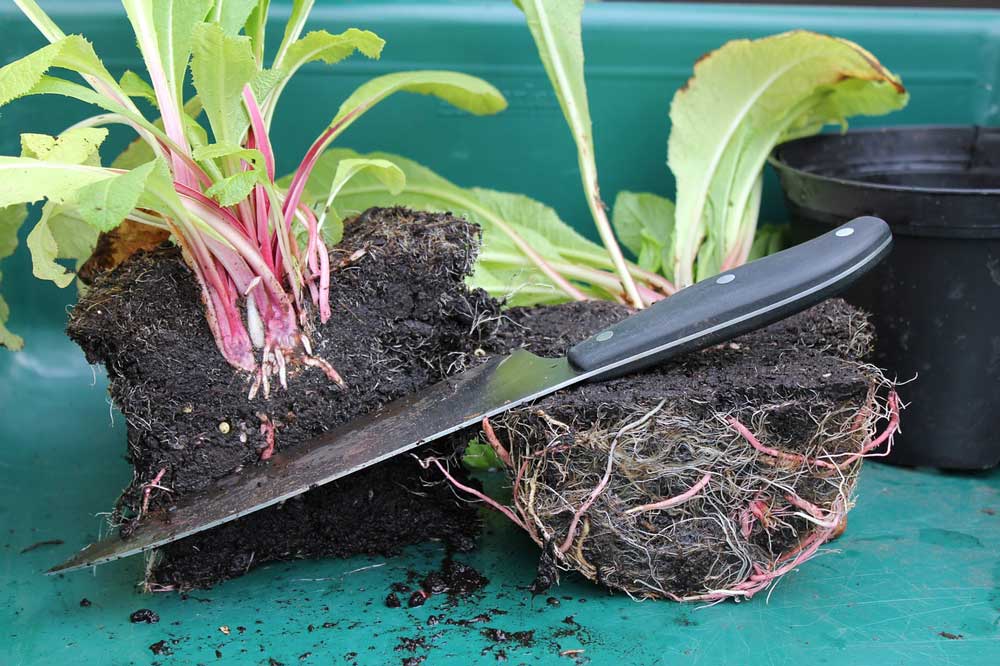Part 4: Propagation by division and bulb scaling
| Site: | OpenLearn Create |
| Course: | Plant propagation |
| Book: | Part 4: Propagation by division and bulb scaling |
| Printed by: | Guest user |
| Date: | Tuesday, 25 November 2025, 12:51 PM |
1. Introduction
When a plant is propagated by division or bulb scaling it is a clone of the parent plant, just like with stem cuttings, leaf cuttings and root cuttings. Sections of the plant are separated out and so each split is genetically identical.
2. Propagation by division

Division = splitting a plant into several pieces, each piece containing some roots, a section of crown and some stems or leaves. This is a suitable method for herbaceous perennials.
This method is quite straight forward and has a high success rate. Fewer plants can be made per stock plant than by other methods such as root, leaf or stem cuttings, but this method can be used for herbaceous perennials which cannot be easily propagated in those ways or in circumstances where only a few new plants are required.
Division (YouTube, 3:44)
Have a go at dividing a plant and potting up or planting out the splits. Any herbaceous perennial with several shoots will do, including grasses.
Do some research online about the best plants to propagate by division. Make a note of any favourites that you would like to try to propagate by division in the future.
3. Propagation by bulb scaling
Bulb scaling = splitting a bulb into many pieces, each one containing scales and a section of base plate, in order to clone it.
This method is a bit fiddly but produces a lot of new plants from a single bulb and so is worth the effort.
Bulb scaling (YouTube, 6:58)
Have a go at bulb scaling. If it is not the correct time of year to have ornamental bulbs to propagate, then have a practice with an onion!
Tip: Larger bulbs are easier and less fiddly to practice with than small bulbs while you are learning the technique – onions are easier than snowdrops!
Do some research online about the best plants to propagate by bulb scaling. Make a note of any favourites that you would like to try to propagate by bulb scaling in the future.